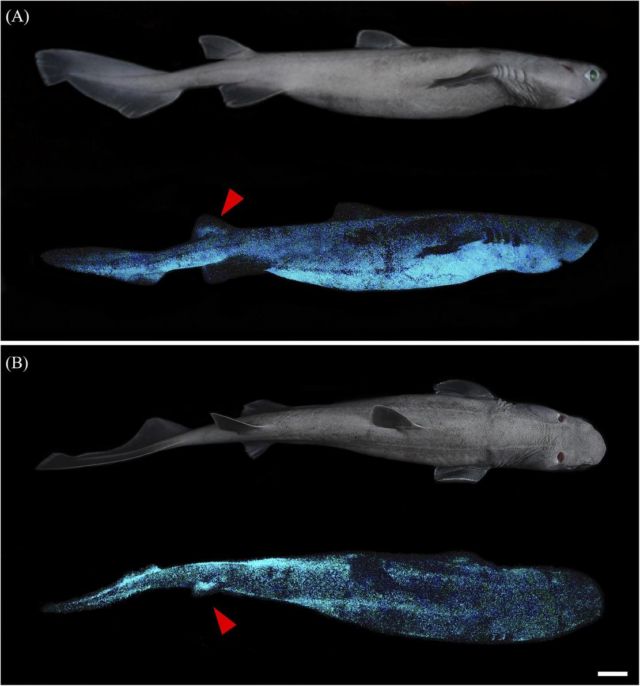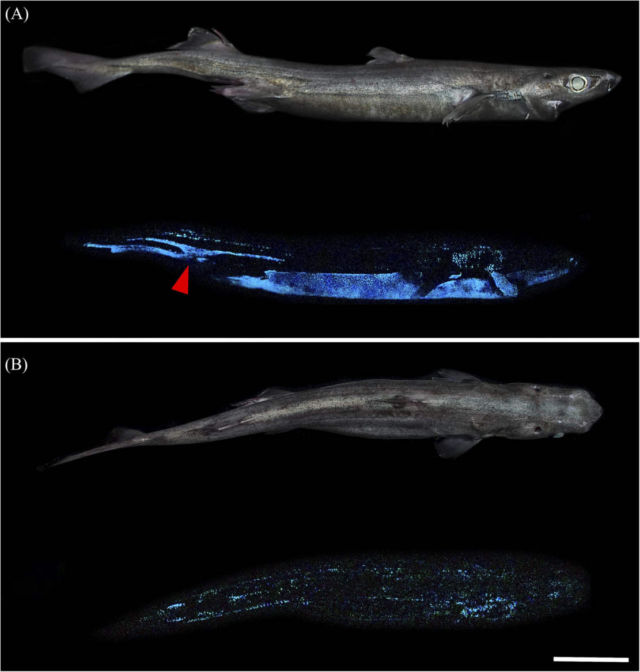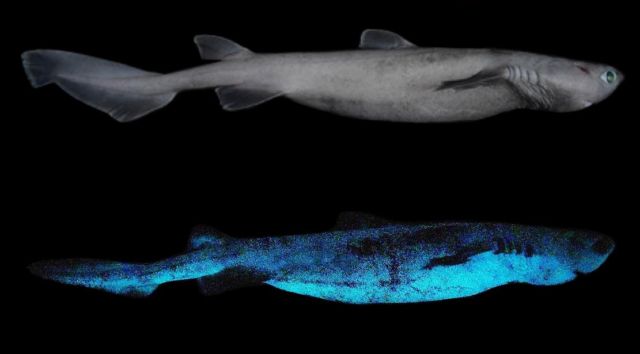Three species of deep-water sharks were collected from the Chatham Rise, off New Zealand, and for the first time scientists documented their luminescence, also called cold light.
A first experimental study of three luminous shark species (Dalatias licha, Etmopterus lucifer, and Etmopterus granulosus) from New Zealand, provides an insight into the diversity of shark bioluminescence and highlights the need for more research, to help understand these unusual deep-sea inhabitants: the glowing sharks.
A special emphasis is placed on the luminescence of Dalatias licha, the largest known luminous vertebrate.
Bioluminescence has often been seen as a spectacular yet uncommon event at sea but considering the vastness of the deep sea and the occurrence of luminous organisms in this zone, it is now more and more obvious that producing light at depth must play an important role structuring the biggest ecosystem on our planet.

Lateral and dorsal luminescent pattern of Dalatias licha. (A) Lateral daylight view and luminescent pattern highlighting the dorso-ventral luminous pattern. (B) Dorsal daylight view and luminescent pattern. Luminescence of the second dorsal fin is observable on this specimen (red arrowhead). Scale bar: 10 cm.

Lateral and dorsal luminescent pattern of Etmopterus lucifer. (A) Lateral daylight view and luminescent pattern. The species-specific flank mark is indicated by a red arrowhead (B) dorsal daylight view and luminescent pattern with specific luminous lines. Scale bar: 10 cm.
source Frontiers in Marine Science






Leave A Comment